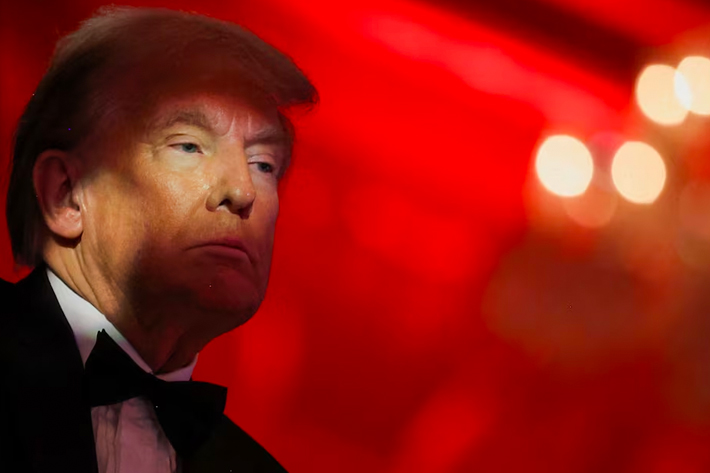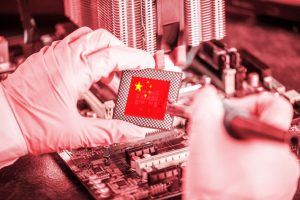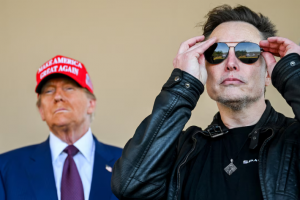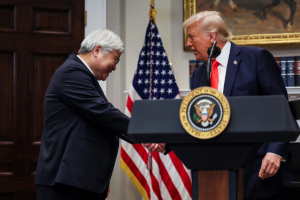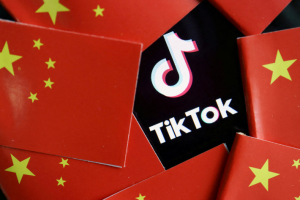Donald Trump is unlikely to start his term as the United States president with imposing promised tariffs of 60% on China, economists polled by Reuters say.
On his campaign trail Trump promised to slap hefty tariffs on Chinese imports as part of a package of “America First” trade measures.
But doing so could accelerate inflation within the United States, economists say.
Also on AF: China Export Tax Bombshell to Raise Oil, Solar, Battery Prices
Instead, they expect him to impose tariffs of nearly 40% on the US’ key economic rival.
A poll of more than 50 economists by Reuters from November 13-20 showed a strong majority of economists, both in and outside mainland China, expected Trump to impose some tariffs by early next year.
Their median estimate was 38%, with projections ranging from 15% to 60%. Most respondents said Trump will resist starting off with blanket 60% tariffs on Chinese goods.
“We expect the new US administration to bring back the original plan of Trump 1.0,” ANZ’s chief economist Raymond Yeung said, estimating that the average tariff on Chinese goods could be raised by 32–37%. In his first term Trump levied 7.5%-25% tariffs on China.
China critic next US commerce secretary
Experts have previously said Trump’s planned tariffs on imports — from China and around the world — will upend global trade flows and raise costs.
On Tuesday, the president-elect said he will nominate Wall Street CEO Howard Lutnick to lead his trade and tariff strategy as head of the Commerce Department — the agency that has become the US weapon of choice against China’s tech sector.
Lutnick has backed Trump’s vision to bring manufacturing jobs back to the US and promote the adoption of cryptocurrency. But unlike other members of Trump’s inner circle, he does not speak about China often.
Still, he is a big proponent of tariffs, especially aimed at China. According to the New York Times, the investment banker said in a podcast interview last month: “Don’t tax our people. Make money instead. Put tariffs on China and make $400 billion.”
The next US commerce secretary will be in charge of enforcing a range of rules put in place by the outgoing Joe Biden Administration to hamper China’s development of advanced technologies like artificial intelligence (AI), semiconductors and quantum computing. That would include steps taken to keep key Chinese tech firms, including Huawei and SMIC, several steps behind their global competitors.
How will tariffs impact China’s economy?
On the potential impact on China, the poll predicted that new US tariffs would reduce China’s 2025 economic growth by around 0.5-1.0 percentage point.
China’s economy is in a much more vulnerable position than it was during Trump’s first term. The world’s second-biggest economy is in the midst of multiple headwinds, including a prolonged property downturn, trillions of dollars worth of debt weighing on its local governments and weak domestic demand.
Beijing has announced a series of measures to support the economy, but experts say much more support is needed.
A strong majority of economists, or 19 of 23 who responded in the poll, said the recent fiscal and monetary stimulus measures announced by the Chinese government have had little impact on the economy and more stimulus is needed. Only four said that these measures would boost economic growth.
Chinese policymakers also face increased pressure next year to spur domestic demand to offset an expected drop in exports – a key growth driver this year, analysts say.
They are awaiting the Trump administration’s China trade policies, which could lead to potential downgrades in their outlooks.
“Exports will be a key pillar of growth as global demand holds up, though new US tariffs could shave up to 1 percentage point off GDP growth,” Mo Ji, chief China economist at DBS, said.
“Consumption will remain lacklustre due to wealth effects from falling property prices and rising unemployment. Infrastructure investment will drive a moderate fixed asset investment recovery, though private investment lags.”
How might China manage tariffs?
For one, China is expected to retaliate against any US tariffs.
Just this weekend, Chinese President Xi Jinping warned the US that “China’s development right” is a red line “which must not be challenged or crossed.” That was one of “the most important guardrails and safety nets” for US-China ties, he said.
Xi made the comment during his final meeting with outgoing US President Joe Biden, making it a veiled warning to Trump.
China is also likely to unveil fresh stimulus measures in the coming weeks to help cushion the economy from any trade tensions with the United States, analysts say.
“We think the Chinese government still has time to monitor and react to the US policy and its effect on China growth and then introduce policy responses at a later stage,” Jian Chang, chief China economist at Barclays, said.
But economists also expect China’s slowing trajectory to continue despite policy support. Most of the economists polled maintained their median growth forecasts for China for this year and 2025 at 4.8% and 4.5%, respectively.
That is consistent with projections made before the US elections. Growth is expected to slow further to 4.2% in 2026.
Economists also expect inflation to ease down to 1.1% for next year and 1.4% for 2026, signalling continued concern that China might slip into a period of ‘entrenched deflation’. Inflation in the country was previously expected to hold at 1.4% and 1.6% in the October survey.
- Reuters, with additional editing and inputs from Vishakha Saxena
Also read:
Trump’s Plan to Kill EV Tax Credits ‘Could Benefit China’
Trump Will Have Big Impacts on Trade, Climate Change, EVs
Trump Says He’ll Hit China With Big Tariffs if it Takes Taiwan
In U-Turn, Elon Musk Says US Tariffs on Chinese EVs ‘Not Good’
China Facing More Trade Rivalry as Trump Claims Poll Win
Concerns Over Trump Cutting Bilateral Meetings With China
Donald Trump Likely to Try to Block US TikTok Ban – WaPo
COP29: What Will Donald Trump Mean For Global Carbon Markets?




